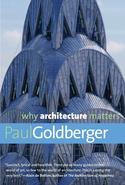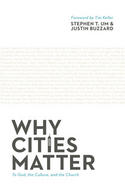The “silver lining” in our five-years-and-running Great Recession, we’re told, is that Americans have finally taken heed of their betters and are finally rejecting the empty allure of suburban space and returning to the urban core. read more »
Urban Issues
Visions of the Rust Belt Future (Part 1)
“Men often applaud an imitation and hiss the real thing”--Aesop
There are interesting developments being played out in the Rust Belt. Some cities, like Detroit, seem to be embarking whole hog down the creative class path. Others, like Pittsburgh, have their own thing going on, a thing Economic Geographer Jim Russell has delineated as the “Rust Belt Chic” model of economic development, with no modest amount of success. How a given Rust Belt city reinvests will have a large say in its future. read more »
Job Dispersion in Major US Metropolitan Areas: 1960-2010
The continuing dispersion of employment in the nation's major metropolitan areas has received attention in two recent reports. The Brookings Institution has published research showing that employment dispersion continued between 2000 and 2010, finding job growth was greater outside a three mile radius from central business districts between 2000 and 2010 in 100 metropolitan areas Note 1). read more »
The Sound and the Fury In Chicago
The Second City syndrome is alive and well. An anti-Chicago essay masquerading as a book review in the New York Times provides the latest example of the truth of that. Rachel Shteir, a former New Yorker now living in Chicago, notes the various ills in the Windy City that should come as a surprise to no one, least of all residents: read more »
Genealogy Of Rust Belt Chic
Some people don't like the term "Rust Belt". Others absolutely hate the word "chic". Please don't call the shifting mesofacts of dying Great Lakes cities "Rust Belt Chic". Given the reaction, a lot of it negative, I decided to blog about how I came up with Rust Belt Chic. Way back in 2006, Shittsburgh was associated with a kind of urban chic. The South Side Slopes celebrated in the New York Times: read more »
The 2012 Metro Year in Jobs
Last month the BLS put out the first official release of annual job data for metropolitan areas, so I wanted to take a brief look at this for large metro areas (more than one million in population, based on old metro area definitions that the BLS still uses). Here are the top 10 cities for percentage job growth. Nashville takes the crown. I’m also personally glad to see Indy bounce back after a couple tough years. read more »
- Login to post comments
The Evolving Urban Form: Nanjing
Nanjing is one of China's most historic cities. It is one of the four great ancient capitals of the nation, along with Beijing, Chang'an (Xi'an) and Luoyang. Its name means southern capital (Nan=south, Jing=capital), while the name of the current capital, Beijing means Northern capital. read more »
Megacities And The Density Delusion: Why More People Doesn't Equal More Wealth
Perhaps no idea is more widely accepted among urban core theorists than the notion that higher population densities lead to more productivity and sustainable economic growth. Yet upon examination, there are less than compelling moorings for the beliefs of what Pittsburgh blogger Jim Russell calls “the density cult,” whose adherents include many planners and urban land speculators. read more »
Building Authenticity: Finding Gems in Florida's Stucco Mansions
This jaded land, Florida, is the world-weary capital of architectural irony, with more tongue-in-cheek showpieces than even Las Vegas. But hidden within the MedRev McMansions, the stucco-smeared stage sets, and the high cynicism of our highway junkspace, there lies hidden a handful of true works of quiet beauty. Leave it to Paul Goldberger, Pulitzer prize-winning architecture critic and best-selling author of Why Architecture Matters, to point it out to us godless heathens. In an interview, he tells me that he’s excited to tour these nuggets we’re hoarding. Who knew?
“While Frank Lloyd Wright and other ‘star-chitects’ hogged center stage,” Goldberger says, “many more created earnest, sincere buildings that fulfilled their obligation to the street. These unsung heroes of American architecture matter. I think that James Gamble Rogers II was one of these in Winter Park. I hope so, anyway, because I’m coming down from New York to see them for the first time ever.” Sincere architecture: an endangered species in the world today, but in over-themed Orlando, practically nonexistent. read more »
- Login to post comments
Why Cities Matter
Why Cities Matter
by Stephen Um and Justin Buzzard
Pretty much everybody doing anything today has to be thinking about how to respond to urbanism, especially in a global but also a developed world context. While it’s clearly too early to proclaim the “death of the suburb” clearly cities have experienced a resurgence. New York, LA, and San Francisco are at all time population highs. The District of Columbia and Philadelphia grew for the first time since 1950 according to the latest census.
Religion has been one of those movements that has to respond to urbanism. Christianity was traditionally an anchor of cities, especially the Catholic Church which was a key agency of assimilating of immigrants into American society, among other things. read more »





















